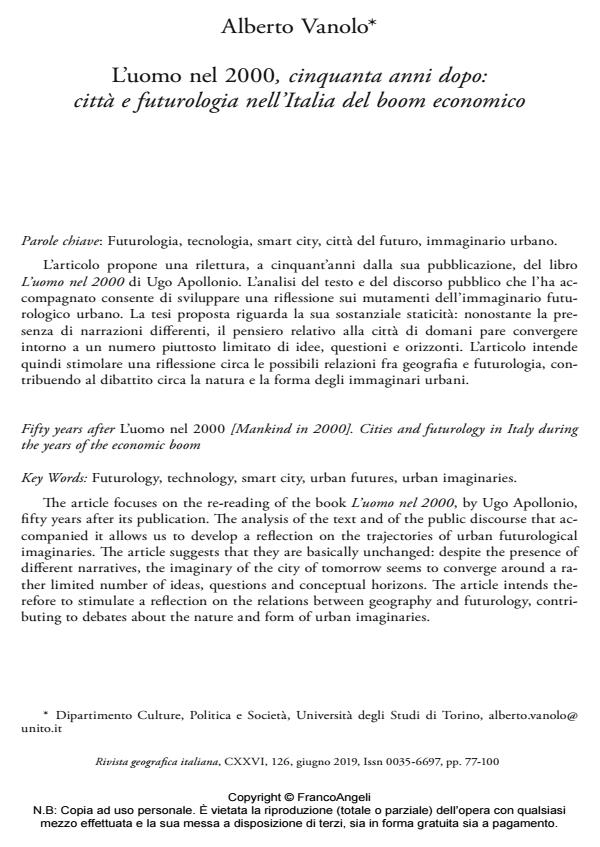Fifty years after L’uomo nel 2000 [Mankind in 2000]. Cities and futurology in Italy during the years of the economic boom
Journal title RIVISTA GEOGRAFICA ITALIANA
Author/s Alberto Vanolo
Publishing Year 2019 Issue 2019/2
Language Italian Pages 24 P. 77-100 File size 320 KB
DOI 10.3280/RGI2019-002004
DOI is like a bar code for intellectual property: to have more infomation
click here
Below, you can see the article first page
If you want to buy this article in PDF format, you can do it, following the instructions to buy download credits

FrancoAngeli is member of Publishers International Linking Association, Inc (PILA), a not-for-profit association which run the CrossRef service enabling links to and from online scholarly content.
The article focuses on the re-reading of the book L’uomo nel 2000, by Ugo Apollonio, fifty years after its publication. The analysis of the text and of the public discourse that accompanied it allows us to develop a reflection on the trajectories of urban futurological imaginaries. The article suggests that they are basically unchanged: despite the presence of different narratives, the imaginary of the city of tomorrow seems to converge around a rather limited number of ideas, questions and conceptual horizons. The article intends therefore to stimulate a reflection on the relations between geography and futurology, contributing to debates about the nature and form of urban imaginaries
Keywords: Futurology, technology, smart city, urban futures, urban imaginaries
Alberto Vanolo, L’uomo nel 2000, cinquanta anni dopo: città e futurologia nell’Italia del boom economico in "RIVISTA GEOGRAFICA ITALIANA" 2/2019, pp 77-100, DOI: 10.3280/RGI2019-002004